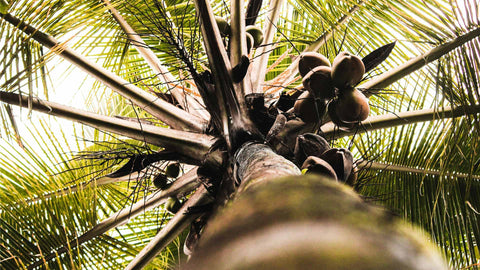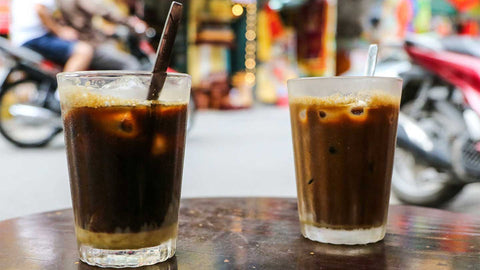Growing up as a picky eater has limited my palate into what is tasty and what feels comforting. I don’t go to great lengths seeking out something new to eat, but I had always been willing to try. So when a friend recommended a fiery serving of Katong-style laksa on a recent trip to Singapore, I gave it a go.
My first authentic laksa was from a small hawker stall tucked within high residential buildings at Jalan Berseh. Equipped with just a spoon, I braced myself and devoured the dish, finishing it with great satisfaction. While laksa is not something I would normally consider ordering in the Philippines, Singaporean laksa is surprisingly friendlier to palates that can tolerate a bit of heat—just a tad bit spicy (enough for me to handle), pungent, and thick. The coconut milk balances out the spiciness with its creamy and sweet flavor.
If it wasn’t for the friend who urged me, I would’ve never tried laksa on my own. But as the saying goes, you can never truly experience a country without trying its local dishes. Once you immerse yourself in a country’s food culture, you get to explore and get to know more about the place and its people. After my bowl of laksa and a ton of realizations, I was finally introduced to the vibrant and diverse culture of Singapore.

One could endlessly argue about how laksa tastes or how spicy it should be, probably because it has so many varieties with multi-cultural influences from neighboring Asian countries. While its origin is unknown, laksa is believed to be from the Peranakans, a mix of Chinese and Malay-Indonesian heritage that settled in Singapore and other Southeast Asian countries. Combining Chinese rice noodle soup with Malay-Indonesian spices and flavors has birthed several variations of Laksa. If you’ve ever been to Singapore, this makes much sense as these influences are also evident in its varied architecture and diverse neighborhoods like Kampong Glam, Chinatown, and Little India.
Laksa, like most dishes that embody the diverse culture and cuisine of Singapore, can be found in hawker centers that are considered to be melting pots of international cuisines. When you go hawker hopping in Singapore, you’ll find dishes that incorporate flavors from around the world.
Take char kway teow, for example. Similar to laksa, this dish is a Malaysian staple but is also a signature in Singapore, born out of the migrants of the Han Chinese group that moved to neighboring countries like Singapore and Malaysia. The same goes for nasi lemak, another hawker favorite with fragrant rice made with coconut milk and fried anchovies. While ingredients for both dishes may vary depending on which Southeast Asian country you’ve tried them in, the shared flavors have opened doors for people to discover the rich history and culture they share with one another.
A few thousand kilometers northeast, Hong Kong’s street food scene is similarly a great way to explore a blend of Chinese and Western customs. Their beautiful and bustling metropolis transforms at night into a sea of vibrant night markets with foods highly influenced by Cantonese cuisine, but also hints at their British colonial past.
If you’re one to enjoy tea, Hong Kong’s tea culture is a good way to learn more about its culture. Deeply rooted in history and traditions, Hong Kong’s tea ceremony is also a common tradition in Chinese weddings, symbolizing love, respect, and gratitude. British influence has given Hong Kong’s tea culture a different flair, though. While afternoon teas are part of British tradition, often served with scones, breads, and pastries, Hong Kong’s yum cha, a Cantonese tradition of drinking teas, is paired with dim sums like xiao long bao, har gow, and siu mai instead. Translating to “touch the heart”, dim sums are served in small bites meant to be light—only touching the heart and not filling the stomach—thus often considered as an appetizer, snack, or a common brunch pair for teas.
In modern settings, afternoon teas commonly consumed in high-end hotels and restaurants have been transformed into casual brunches in cafes and restaurants. The teas, now served sweeter thanks to the milk added, have given birth to milk teas, which are commonly available in local cafes, restaurants, and night markets, providing a more affordable take on the Chinese-Western culture hybrid.
Halfway around the world in Madrid, small plates like dim sum come in the form of cured meats, cheeses, and olives, to more intricate ones like torreznos (pork rind), tortilla de patatas (Spanish omelet), croquetas, or empanadas. Commonly known as tapas, Spain’s food culture has slight similarities to Hong Kong, wherein small bites are also paired with a drink. However, Spain’s tapas culture goes hand in hand with alcoholic beverages—beers, wines, and sangria can be enjoyed during casual gatherings and socialization with friends. This tradition has birthed several tapas crawls across the country, making it the best way to immerse yourself in their food scene.

Going around Madrid, you’ll see traces of their culture and traditions in its architecture and people. You’ll see people eating tapas with one hand and holding a wine glass in the other. Sometimes you’ll see them sitting outside, oftentimes just standing and talking inside. This experience fosters a connection to people—whether strangers or not—to share unforgettable stories and experiences—another good way to embrace a country’s culture through food.
Legend has it that tapas were born during King Alfonso X’s reign when he requested inns and taverns to serve small plates to prevent guests from getting drunk. For some, it was during King Alfonso XIII's reign when small plates with sausages or cheese were used to cover a drink, keeping them free from dirt and insects. While there may be various stories behind where tapas originally came from, this age-old tradition of eating small bites with a drink is an important part of Spain’s culture and cuisine. It was even considered part of the Intangible Cultural Heritage of Humanity by UNESCO.
And like any other country, the Philippines has its own history and customs embedded in its food. The City of Iloilo, UNESCO’s first Creative City of Gastronomy in the Philippines, boasts a plethora of delightful dishes like la paz batchoy, a comforting bowl of noodle soup with broth, egg, pork meat, and offal, reflecting the country’s resourcefulness and creativity. While there are various stories as to how la paz batchoy was created, the dish is believed to be a blend of Chinese, Spanish, and Filipino influences, which point to our longstanding colonial and trade histories.
Visiting Iloilo and joining a food tour gives you a chance to discover the Philippines and its rich culinary history. From the rice noodles brought by the Chinese that birthed several pancit varieties, to local adaptations of Spanish dishes such as embutido or leche flan, the diverse flavors from the country’s beaming landscape and flavors brought by neighboring countries make an authentic Filipino dish.
Beyond mere sustenance, food is an avenue to discover what the world has to offer. It offers a glimpse into a place’s history and traditions, and what its people hold dear. From spicy laksa to hearty dim sums and well-loved tapas, behind every dish lies rich stories waiting to be discovered; and what better way to experience the world than exploring it one cuisine at a time.





